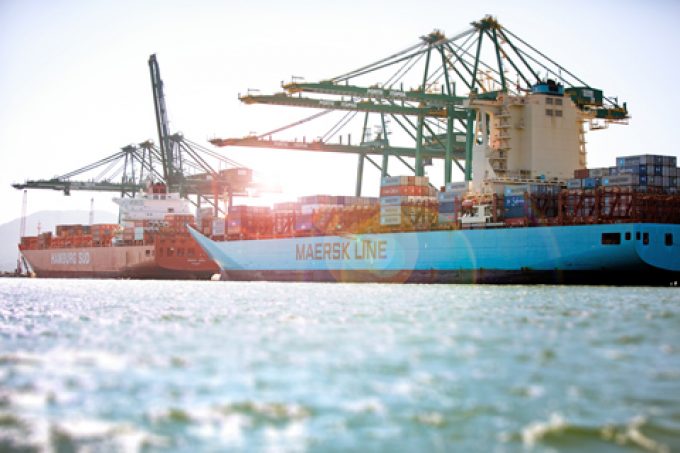Liners unveil Asia-Europe FAK price hikes to arrest steady rate decline
Container shipping lines are looking for a hike in Asia-Europe spot freight rates, announcing a ...

Maersk Line has announced it is cutting its FAK rates from Asia to Northern Europe from 16 May, as ocean carriers serving the trade continue to suffer from soft demand ahead of the peak season.
The Danish container line will slash its rate from Shanghai to North European ports by $300, to $1,600 per 40ft, as it begins to feel the heat from the launch of the Ocean Alliance’s additional seventh loop last month.
Maersk’s new FAK rates will be valid until 31 May, when it will hope to re-raise them as peak season bookings start to kick in.
And there was an optimistic tone from one of Maersk’s competitors yesterday.
During Hapag-Lloyd’s earnings call presentation, chief executive Rolf Habben Jansen said: “Where it was a little bit sluggish, we are starting to see signals that demand is picking up.
“It is always a bit of a crystal ball you have to look into as to whether this happens around mid-May, 1 June or mid-June. Last year it was fairly late, around 1 July, but I don’t see anything abnormal in the market right now, so that’s why I say it will pick up anywhere between now and four-to-six weeks.”
Meanwhile, container spot rates on the route are lagging behind where they were a year ago.
In its first publication since 26 April, the Shanghai Containerized Freight Index (SCFI) recorded a 7% uplift in rates to North Europe over the two-week period to $768 per teu, which compares with a reading of $811 per teu on 11 May 2018.
For Mediterranean ports, rates were flat at $726 per teu, compared with $783 a year ago.
In the US, the decision to apply a 25% tariff on $325bn of Chinese imports, including consumer goods that had so far not been subject to duty, has wrong-footed the transpacific market, which had been led to believe that the US and China were “very close” to a trade deal.
George Griffiths, editor, global container freight market, at S&P Global Platts, told The Loadstar today: “The big question now is whether we will see BCOs starting to hold back importing into the US, at least until the tariffs become clearer.
“They front-loaded heavily ahead of potential tariffs at the start of the year, but there hasn’t been a deadline this time for everyone to try and import before it came into effect.”
The Asia-US west coast component of the SCFI saw an 8.1% decline in the two-week period to $1,442 per 40ft, while spot rates for the US east coast were flat at $2,711 per 40ft.
Digital start-up Freightos explained that the more robust US east coast spot rates had been buoyed by the recent Panama Canal draught restrictions, resulting in a tightening of capacity on Asia-US east coast vessels transiting the waterway.
And carriers appear to have had some success in hiking annual contract rates on the transpacific, which accounts for around 50% of their liftings on the route.
Indeed, Mr Habben Jansen revealed yesterday that the increase Hapag-Lloyd had obtained from its transpacific customers was averaging out at “three digits per teu” for annual contracts starting 1 May.
Elsewhere, the SCFI recorded mixed fortunes for carriers from Asia to West Africa and Asia to South America. While spot rates from Shanghai to Lagos are healthier than a year ago, at $2,601 per teu, compared with $2,004 per teu 12 months ago, there are troubles brewing for carriers to Latin America.
This week’s SCFI recorded a further 17.5% slump in rates to Santos, to $940 per teu. Spot rates in the same week of 2018 stood at $2,118 per teu, suggesting that carriers will need to radically cut capacity to restore rates to economically viable levels.
Comment on this article